ETL vs ELT: Key Differences, Benefits & Use Cases Explained
It's amazing to see how Data teams today are racing ahead - moving from traditional warehouses to cloud-native platforms, lakehouses, and real-time architectures. But in this rush,...
Listening is fun too.
Straighten your back and cherish with coffee - PLAY !
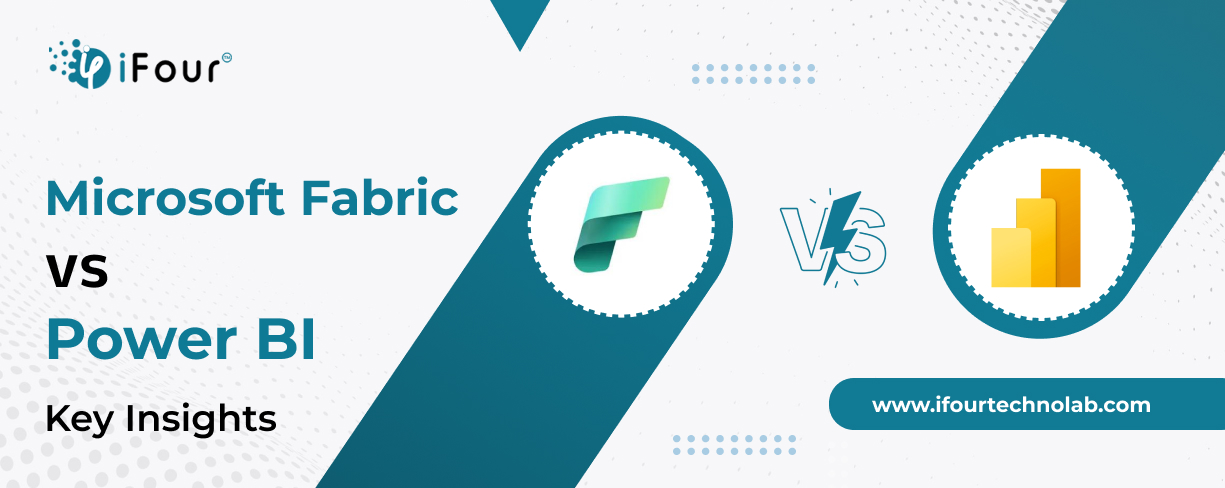
Businesses heavily rely on data analytics and BI for quick decision-making and diverse data management. Power BI, everyone’s favoured business intelligence tool, now has a competitor. Yes, you heard this right, there is a tool out there competing strongly with Power BI which is Microsoft Fabric.
Just as Power BI, Microsoft Fabric is also an esteemed data analytic platform used for actionable insights and data visualization. It helps you create interactive dashboards and reports and connects with multiple data sources effectively for optimal decision-making.
However, deciding which platform to use, Power BI or Microsoft Fabric isn't easy when they both offer incredible features. To make the best choice, you must thoroughly understand the ins and outs of both.
Let’s delve further and explore Microsoft Fabric vs Power BI to help you select the right data analysis tool.
Strategic alignment is the first step in deciding the right tool. This approach includes comprehension of various aspects such as their features, integration capabilities, scalability, and ecosystem support.
Power BI vs Microsoft Fabric: Core Capabilities
The core capabilities to consider are given below. Align them with your objectives and see which one fits best.
| Power BI | Microsoft Fabric |
|---|---|
| It primarily focuses on business intelligence (BI) and data visualization. | It combines multiple tools and services (including Power BI) into a unified platform. |
| It provides robust reporting, dashboards, and data exploration tools. | It provides plenty of tools for data movement, processing, and transformation. |
| It connects to a broad range of data sources, which includes cloud storage, web services, MS spreadsheets, and more. | Microsoft Fabric you can leverage advanced analytics like real-time analytics, AI-powered insights, and more. |
Microsoft Fabric vs Power BI: Scalability
Microsoft Fabric and Power BI both are scalable options, while Fabric is more focused on large-scale data needs.
Microsoft Fabric:
Power BI:
Microsoft Fabric vs Power BI: Integration and Ecosystem
Fabric’s integration capabilities excel more when compared to Power BI. Let’s check it out.
Microsoft Fabric:
Power BI:
Learn more about migrating from Excel to Power BI for complex data analysis.
Microsoft Fabric helps achieve business objectives by offering a unified platform for creating and managing cloud-native applications. Power BI helps in achieving business objectives by facilitating data driven decision making through robust analytics and visualization features.
When differentiating the cost considerations of both data visualization platforms for CTOs, other factors should be considered such as upfront licensing costs, ongoing maintenance expenses, and scalability requirements. Let’s have a look.
Power BI:
Microsoft Fabric:
Effective budgeting should align with anticipated ROI, growth projections, and strategic objectives for optimal resource allocation.
Take a look at these prime Power BI use cases we've crafted for our industry CTOs. These BI examples helped them simplify their operational decisions!
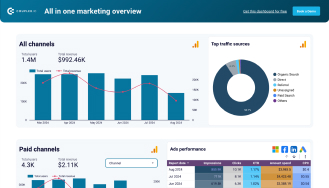
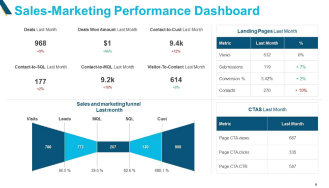
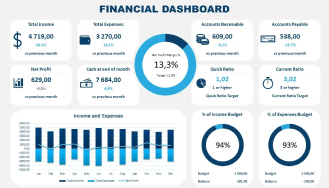
Microsoft Fabric and Power BI are common data visualization tools, when choosing between these two their integration and adoption capabilities should be calculated, which is described as follow.
Microsoft Fabric:
Power BI:
Integration capabilities of both platforms depend on their compatibility with existing systems and workflows.
| Factors | Microsoft Fabric | Power BI |
|---|---|---|
| Compatibility | Microsoft Fabric works on Azure services for seamless integration across cloud environments that requires alignment with Azure infrastructure and data management practices. | Power BI offers extensive connectors and APIs, ensuring smooth integration with various data sources and business applications. |
| Flexibility | Microsoft Fabric demonstrates flexibility in integrating with other enterprise solutions. | Power BI excels with its wide range of connectors and APIs, making it adaptable to diverse IT environments. |
| Disruption | Smoothly integrates with Microsoft platform however there might be challenges while integrating with third-party solutions. | The wide compatibility lets you face minimal disruption. |
When comparing Microsoft Fabric vs Power BI for data security and compliance, it's important to note their distinct strengths.
Microsoft Fabric:
Power BI:
Organizations can choose Microsoft Fabric for extensive data analytics comparison needs and security protocols across diverse datasets. Meanwhile, Power BI suits environments that prioritize intuitive data visualization and analysis capabilities without compromising on data protection and compliance standards. Both platforms offer essential tools for maintaining data integrity and security, catering to different aspects of modern data management strategies.
Let's compare the expected performance outcomes, downtime implications, and support options for Microsoft Fabric and Power BI.
Microsoft Fabric:
Power BI:
Microsoft Fabric beats Power BI in the matter of performance and reliability as it can handle large-scale data.
When comparing Microsoft Fabric and Power BI for business use it is essential to evaluate their analytics and data insights capabilities as it can affect timely decision making.
Microsoft Fabric:
Power BI:
Both platforms empower businesses with deep insights into operational trends and customer behaviors, crucial for strategic planning. Microsoft Fabric excels in advanced analytics capabilities making it the best data analytics tool for CTOs.
Let’s compare user experience in Microsoft Fabric vs Power BI by considering the below factors.
Microsoft Fabric:
Power BI:
Both platforms excel in certain factors for their interface and usability. Talking about feedback from users, then both platforms receive positive feedback for their ability to improve efficiency and decision-making. Here, organizations can implement the combination of both these platforms to leverage advanced analytics capabilities.
Vendor support and community are important for platform adoption and success. In Microsoft power bi vs Fabric, both offer robust vendor support. Let’s have a look.
Microsoft Fabric:
Power BI:
Both platforms boost active user communities and numerous third-party resources such as forums, tutorials, and user groups which foster collaboration and innovation among users. The combination of strong vendor support and a vibrant community enhances user experience and facilitates the effective use of both platforms.
Choosing from Microsoft Fabric vs Power BI for CTOs depends on their organizational priorities. CTOs seeking comprehensive data management solutions can opt for Microsoft Fabric, while those prioritizing user-friendly analytics and rapid insights can go with Power BI. The choice ultimately comes from aligning platform strengths with specific business needs for optimal performance and strategic growth.
In this business intelligence tools comparison for enterprises, we looked for unique strengths and weak points of each platform that help us understand a better approach for choosing the best data visualization tool.
Looking for the right guidance? Get Power BI consulting services from iFour. Whether you are looking to optimize data analytics, or looking to enhance visualization capabilities, or streamline business intelligence processes, our Power BI experts will provide you with the best solutions that align with your organizational goals.
(Turning insights into various data visualizations)
Microsoft Fabric comprehensive analytics platform as it brings all tools together to solve your complex and large-scale data analysis requirements. While Power BI asses the requirements for data visualization and reporting only. Overall, Power BI comes under the Microsoft Fabric serving as the primary component for visualization.
Choosing between Microsoft Fabric and Power BI depends on your data needs and your expertise. Choose Power BI if you want to use a user-friendly dashboard and want to get clear insights. Choose Microsoft Fabric for your complex data needs and real-time insight needs.
There are multiple advantages of Microsoft Fabric over Power BI such as it lets you access deeper insights for complex data, provides real-time insights, and scales effortlessly with large data volumes.
This eBook shows you how.

It's amazing to see how Data teams today are racing ahead - moving from traditional warehouses to cloud-native platforms, lakehouses, and real-time architectures. But in this rush,...

Think about the last time CTOs spent most of their time fixing old systems. Updates were slow, servers were expensive, and adding new features took time. Now, things have changed....
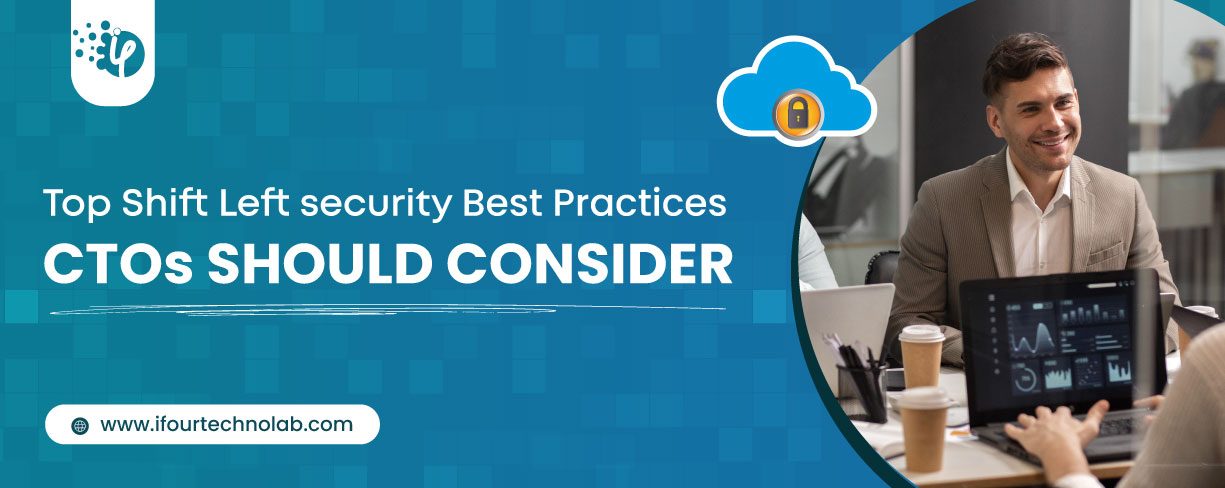
According to HackerOne, fixing a security issue after software is released can cost 30 times more than fixing it during development. Today, CTOs take a different approach. Shift...